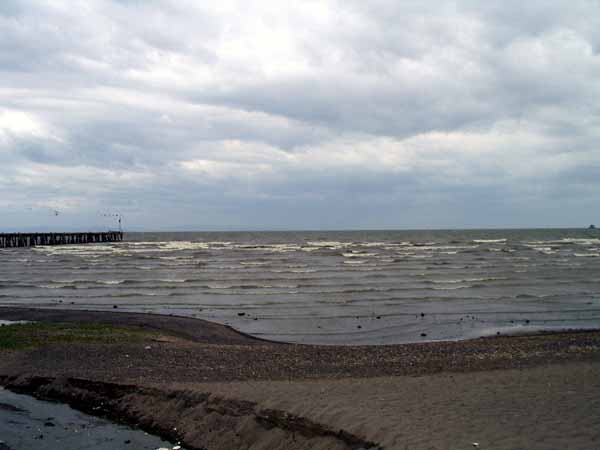
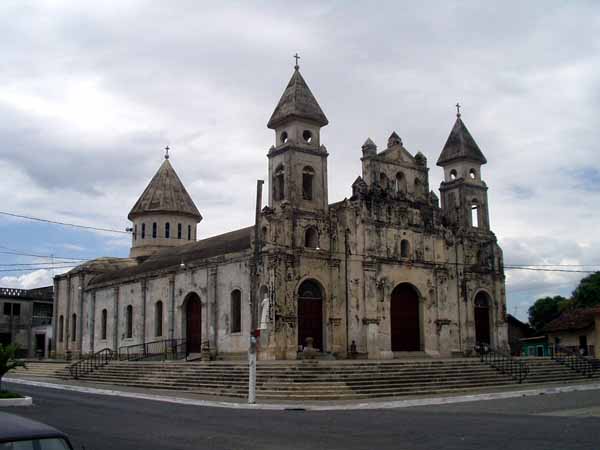
Granada is Nicaragua's oldest Spanish city, founded in 1524. It is an attractive city, with many of the old colonial buildings restored. It's also a decent place to hang out and catch up on reading. It is cheap compared to Costa Rica, so I could let my finances recover from travels and classes. I arrived late on the first of April and got a ten dollar room in Hospedaje Cociboca for a couple of nights, then moved to big room with a kiitchen--sink, range, refrigerator and coffee maker--for $15 a night in Hospedaje Central. Hospedaje Central was an old renovated hacienda run by an American named Wayne, and had a good restaurant and bar open till late. I recommend it if you are ever in Granada and in need of budget accommodations.
By the way, Nicaragua's currency is the
cordoba; I think the exchange rate at the time was something like
15 to the dollar. There were some ATM's in Managua where I could
take out money in Cordoba's or dollars, but they weren't always
easy to get to, so I had stocked up on U.S. dollars before I left
Costa Rica. Dollars were acceptable for rooms, taxi's and most
other tourist type transactions, but Cordoba's were used for mundane
stuff. What was interesting was how money was exchanged. I mostly
carried dollars, and whenever I needed to exchange dollars for
Cordobas I would go to one of the money changers hanging out on
busy street corners in Granada. In many countries the street changers
will charge a ridiculous amount for the exchange or rip you off
by giving you some worthless currency, but in Nicaragua these
people were honest and charged a transaction fee lower than banks.
I would go to them to exchange enough cordobas to get me through
the next few days. What I thought was striking was the money changers
could stand in the open with huge wads of cash in their hands
and pockets. In Costa Rica, the safe country of Central America,
no smart person advertised the fact he was carrying a lot of cash
and every bank had at least one shotgun toting guard standing
at the entrance. Crime is a problem in parts of Nicaragua, but
the places I visited all seemed safe, with the qualified exception
of Managua.
Granada is on the shore of Lago de Nicaragua and at the foot of Volcan Mombacho, which has been quiet for centuries but is not completely dead. Like most of western Central America, Granada has earthquake problems. However Granada's most recent major devastation occurred in 1856 when the American William Walker captured Granada and then torched the city when forced to retreat. William Walker was taking advantage of a civil war to set himself up as ruler of Nicaragua. He briefly succeeded and is not remembered fondly.
Ok, a few pictures from around Granada. First is Lago de Nicaragua, which I didn't know anything about before I arrived in Granada. It is a fresh water lake the size of a small sea. Next is the Iglesia de Guadalupe, which was originally a fort (that explains the round tower with what look like gun turrets) and converted to a church:


The blue building is the Covento y Iglesia de San Francisco, built in 1585, burned by Walker in 1856, and rebuilt in 1867-68. After that is the Parque Colon, the central square of old town. It is a nice square surrounded by restored colonial buildings and a cathedral, but I couldn't get a good picture of any of these because of the trees. Parque Colon had frequent festivals on weekends with food and music:
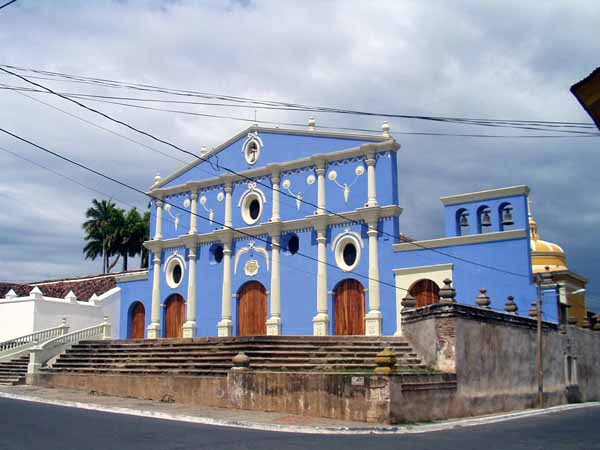
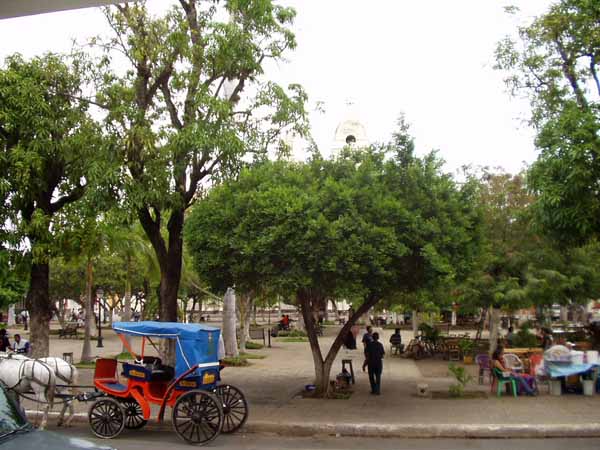
The yellow building is a church near the Fortaleza. I thought it looked nice, but I couldn't find any information on it. After it is the Fortaleza La Polvora, built in 1749 and used by Somoza's forces to interrogate and execute prisoners. From the tower in the Fortaleza I took a picture of Volcan Mombacho:
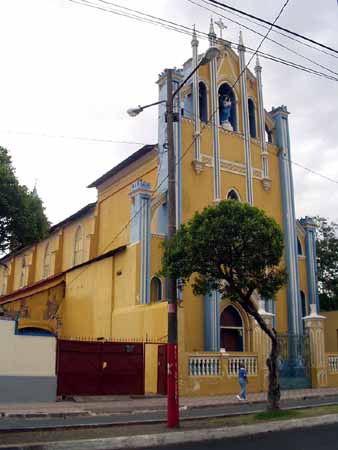
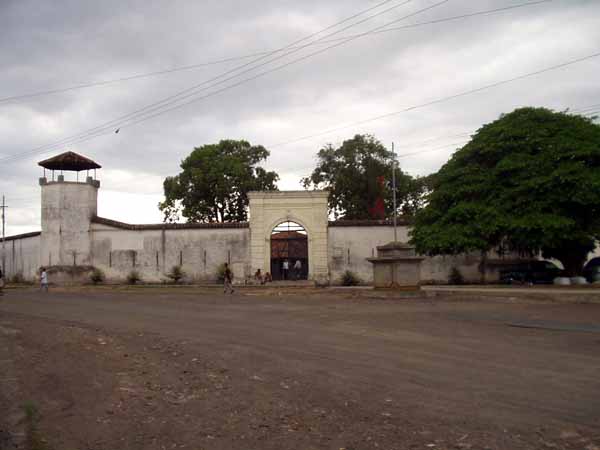
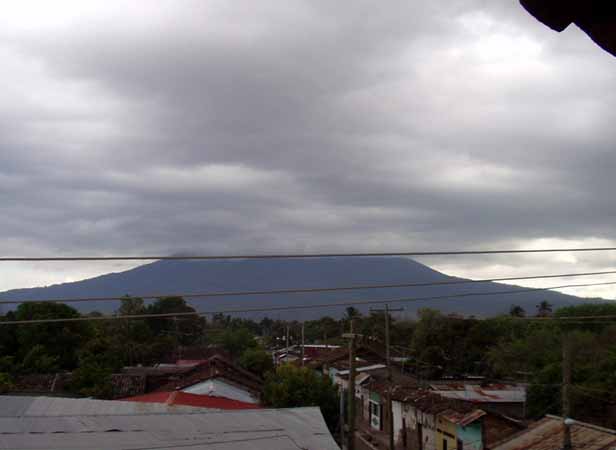
This is a mansion across the street from Hospedaje Central which was for sale, I was told for $450,000. I got a brief look inside, it seems to extend back for the length of the block; I estimate its footprint to be about 9000 square feet. It has the standard hacienda design with the central courtyard walled in by two story wings on all sides. The two stories were very tall, the ceilings were 12 to 15 feet high. This place was really nice. While I was staying in Granada there was the local equivalent of a coming out party for the daughter of one of the local rich people. Kids were arriving in limos in tuxedos and fine dresses. Nicaragua is a country with a small number of very rich people and a large number of appallingly poor:
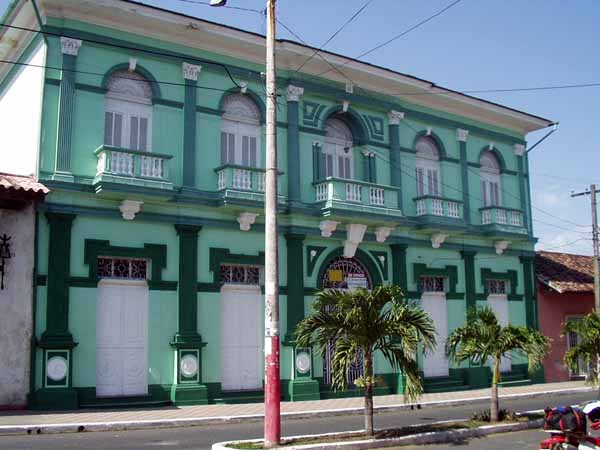
I took a half day lake tour from Granada that wasn't that great. I did get some nice pictures of two monkeys on a small island in the lake. I think they were put there for the amusement of tourists and depend on handouts of food to survive. Kind of sad, but I brought them some bananas and took the pictures anyway:



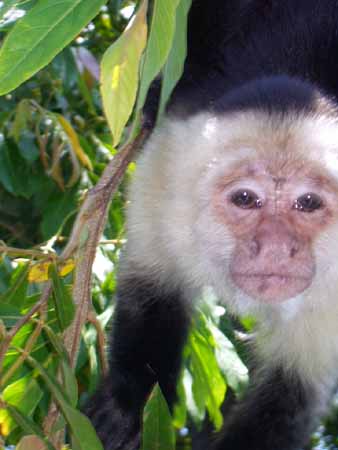
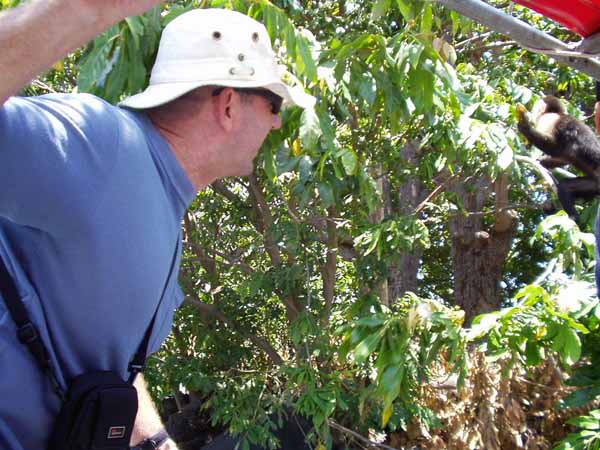
Masaya
A short drive from Granada, on the road to Managua, is Volcan Masaya. The town of Masaya near the volcano has the Mercado Viejo with an impressive selection of local arts and crafts, including some beautiful wood carvings, leather goods and clothes. Prices were amazingly cheap, unfortunately shipping packages from Nicaragua to the U.S. was amazingly expensive. I don't recall the numbers, just that it was enough to discourage me. I limited my shopping to some pretty necklaces made of volcanic rock which I gave to my nieces for souvenirs. Too bad, Nicaragua is an incredible place for bargain crafts, but shipping is more expensive than in any other country I've checked.
Volcan Masaya is impressive and easily accessible; just a short drive from the highway connecting Managua and Granada. The last major eruption was in 1772, but there have been numerous rumblings, collapses and rearrangements in the multiple craters, and a short lava flow in 1993. Sulfur fumes are constantly rising from the most active crater. There are stories that say before the Spanish arrived the indigenous people threw young women into the volcano to appease Chaciutique, the goddess of fire. Skeletons found in lava tubes seem to support the claim. The 16th century Spanish believed this was the gateway to hell and put up a cross to exorcise the demons. According to our guide in more modern times the government, he didn't specify if it was the pre 1979 Somozan or the 1979 to 1990 Sandinistas, would dispose of troublemakers by dropping them into the crater by helicopter.
Below are some composites and single shots of the crater. I was told that from the other side of the rim you can see lava in the deepest crater, but that area was off limits:



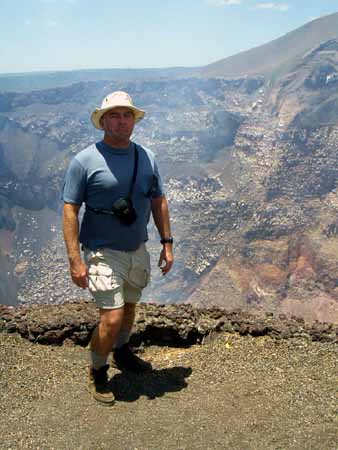
Someone more foolish than me, I'm guessing Santiago, climbed down into the largest crater to write his name in stones next to the vent:
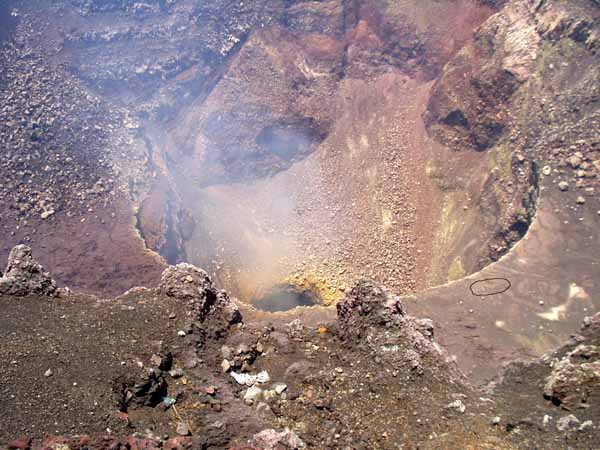
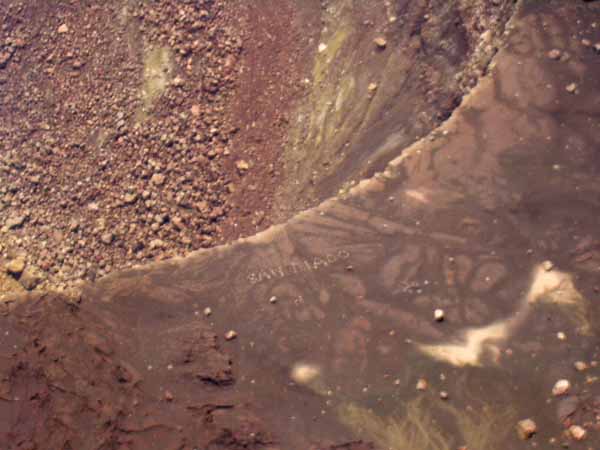
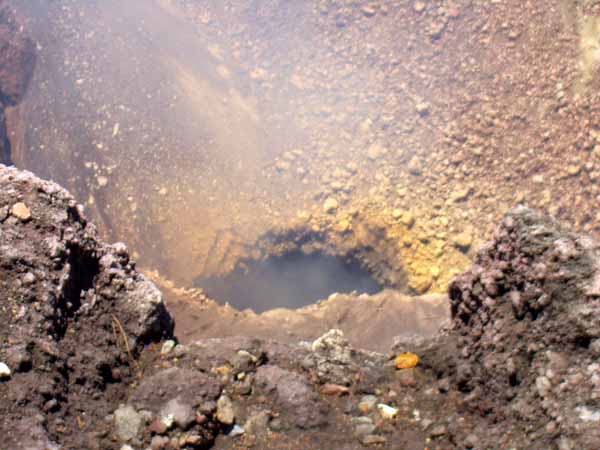
The view from the edge of the crater, and the cross kept at the crater. Not the original cross, it has been replaced several times, but a cross is still kept there:
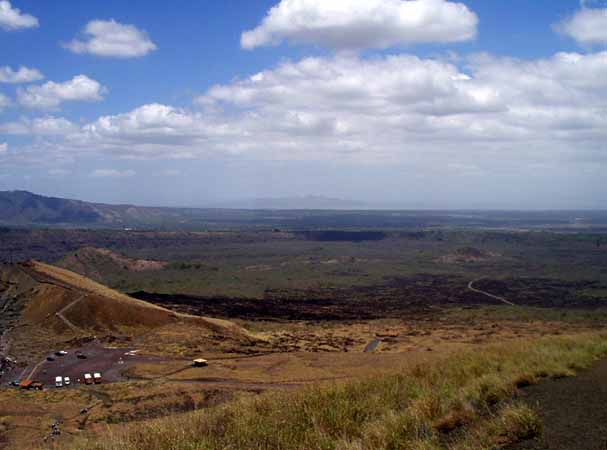
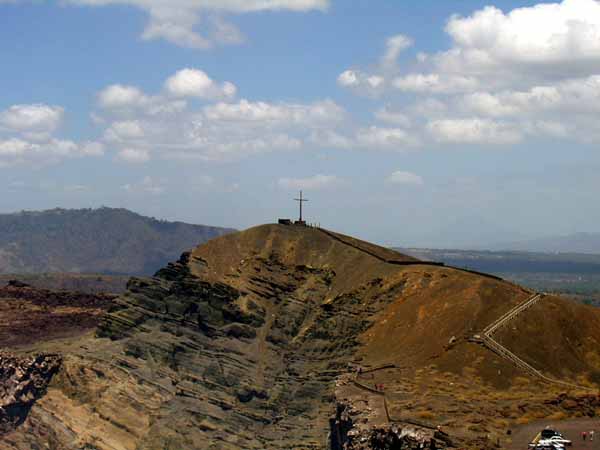
El Mirador
A short distance from Masaya is El Mirador, a crater lake. Not a whole lot more to say about it, just a scenic lake. In the first picture Lago de Nicaragua is in the background, and the white spot on the far side of the crater just right of center is Granada. The second picture is a close-up. The third picture is a composite of El Mirador:
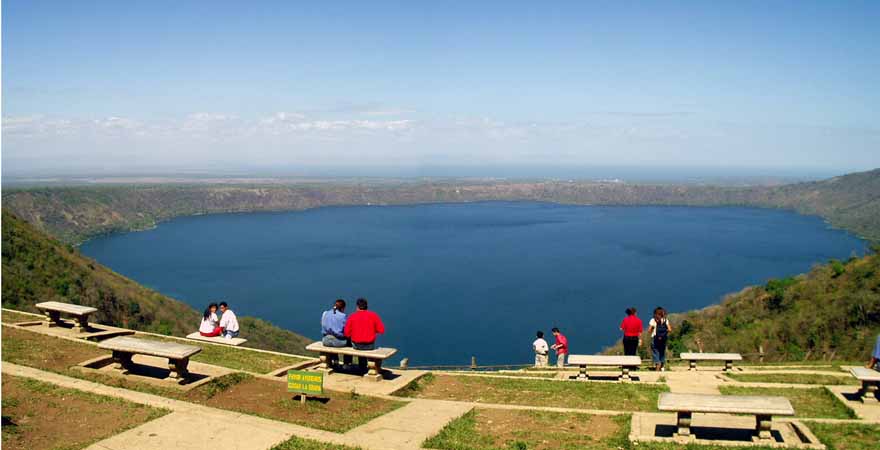
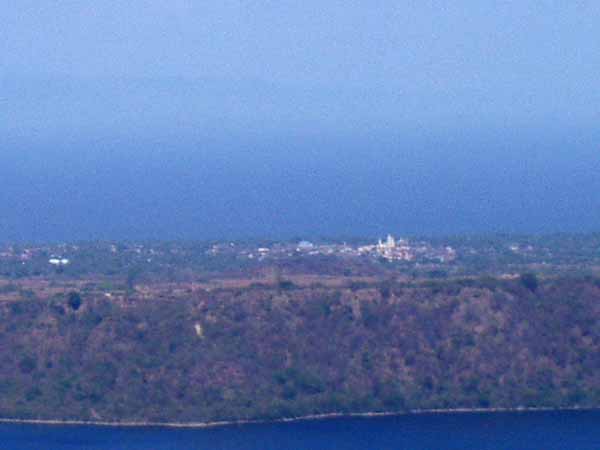
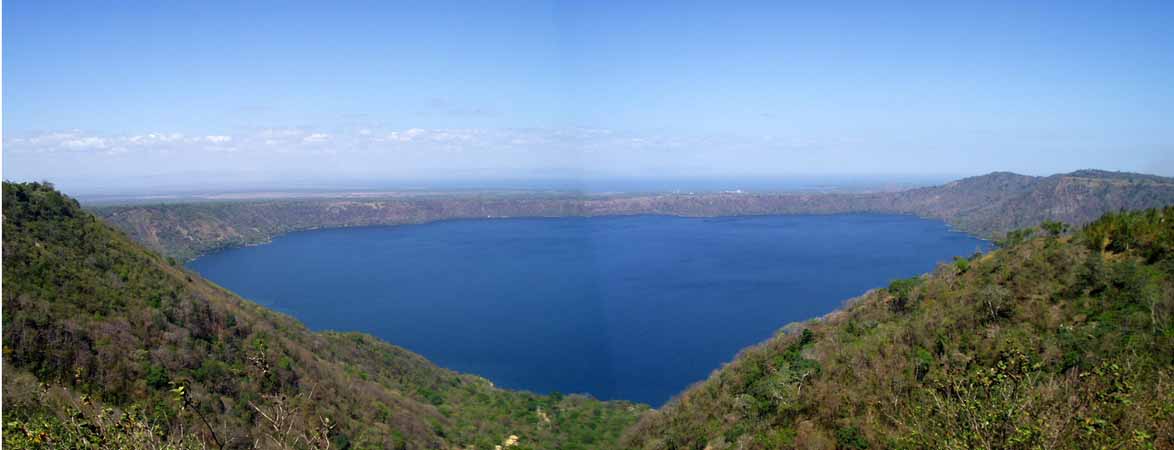
While at El Mirador I was able to take another picture of Volcan Mombacho, this time on a clear day:

Mombacho
From Granada I took a half day canopy tour on Volcan Mombacho. It was ok but didn't come close to the canopy tour in Monte Verde in Costa Rica. We did have some nice views of the Lago de Nicaragua from the side of the mountain:
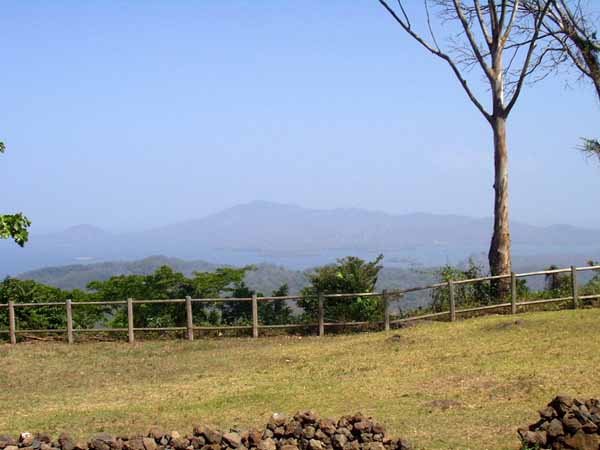
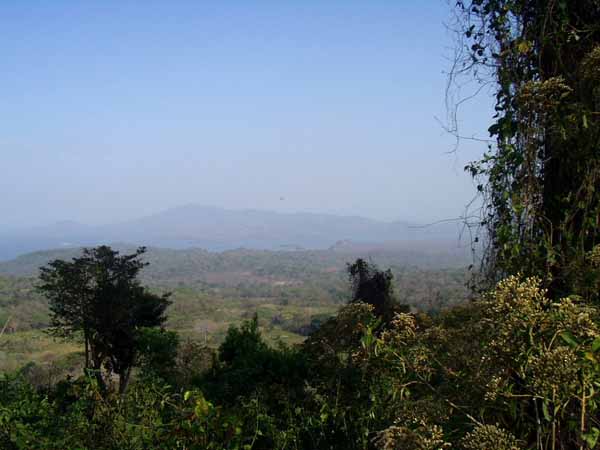
A few pictures on the canopy tour and a picture is of me preparing to rappel from the final platform of the tour:
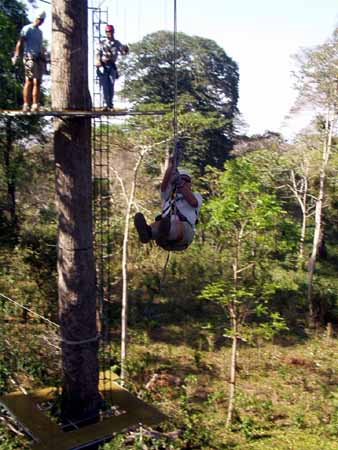
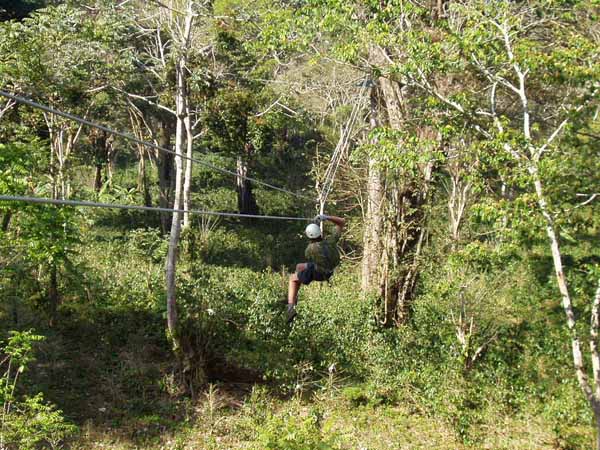
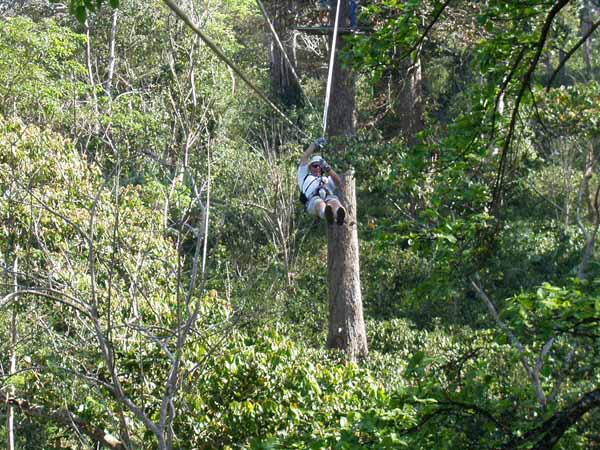

After two weeks of short half day trips and a lot of mellowing out I decided to check out Ometepe, a volcanic island in the center of Lago de Nicaragua: